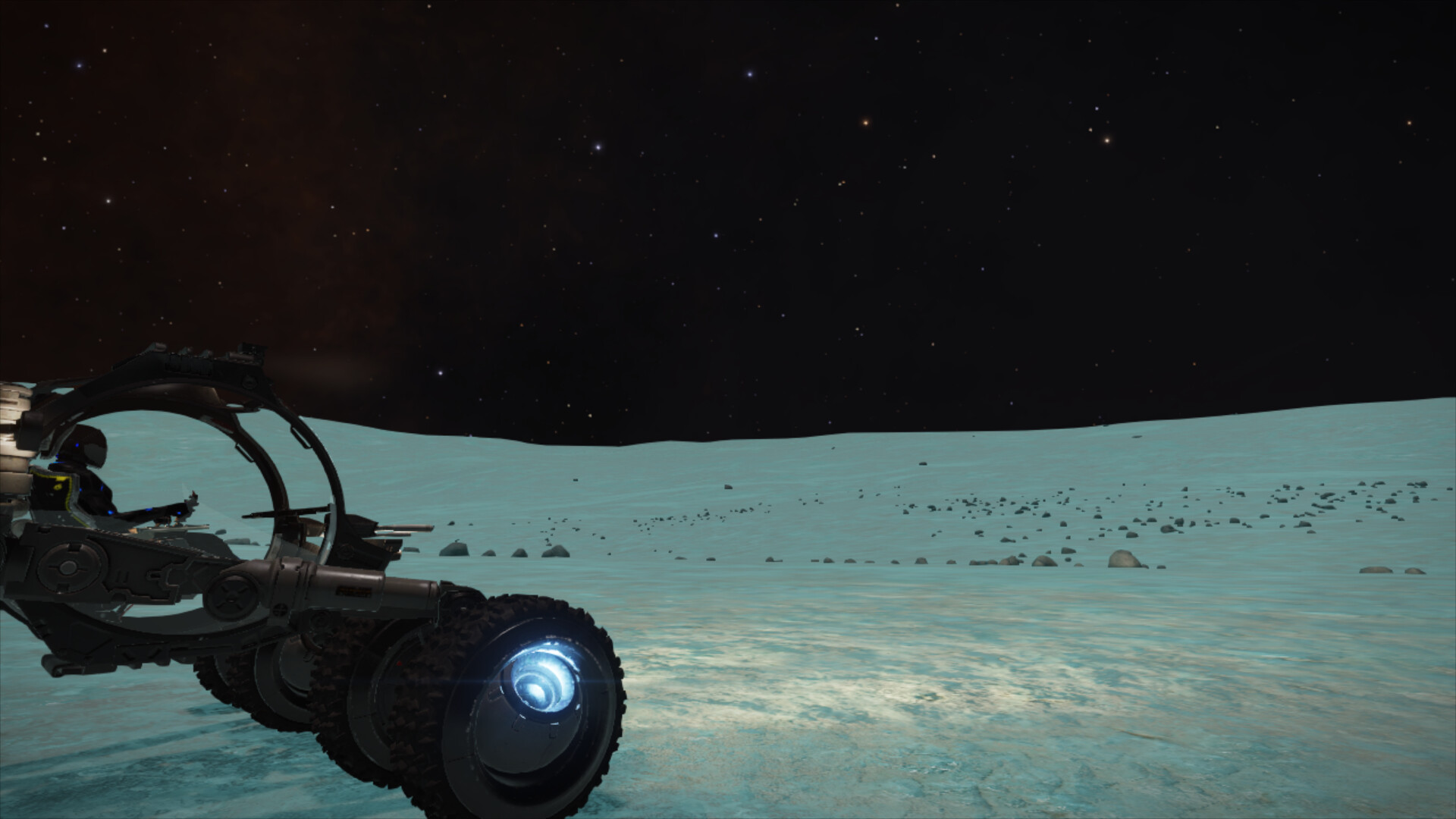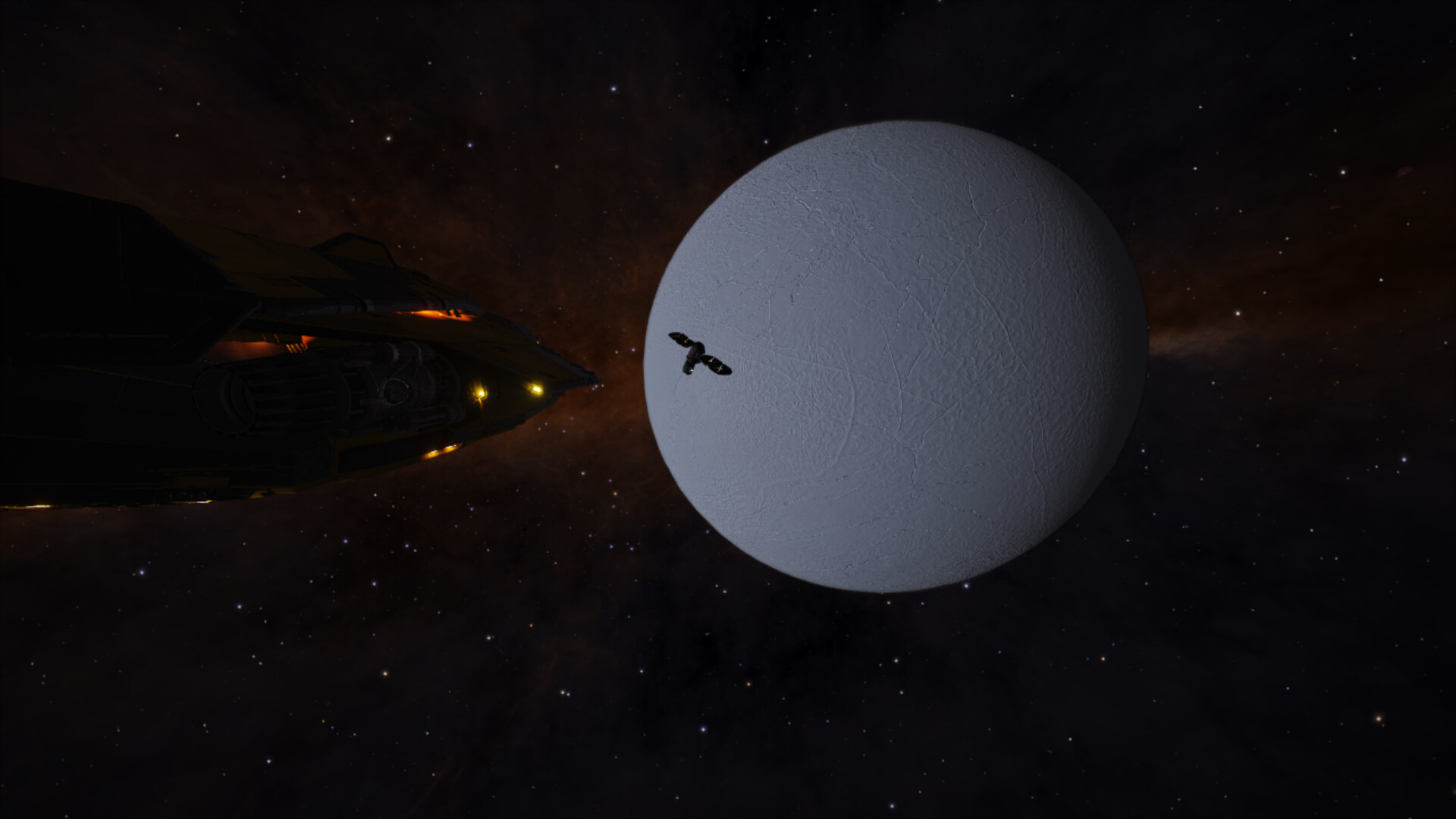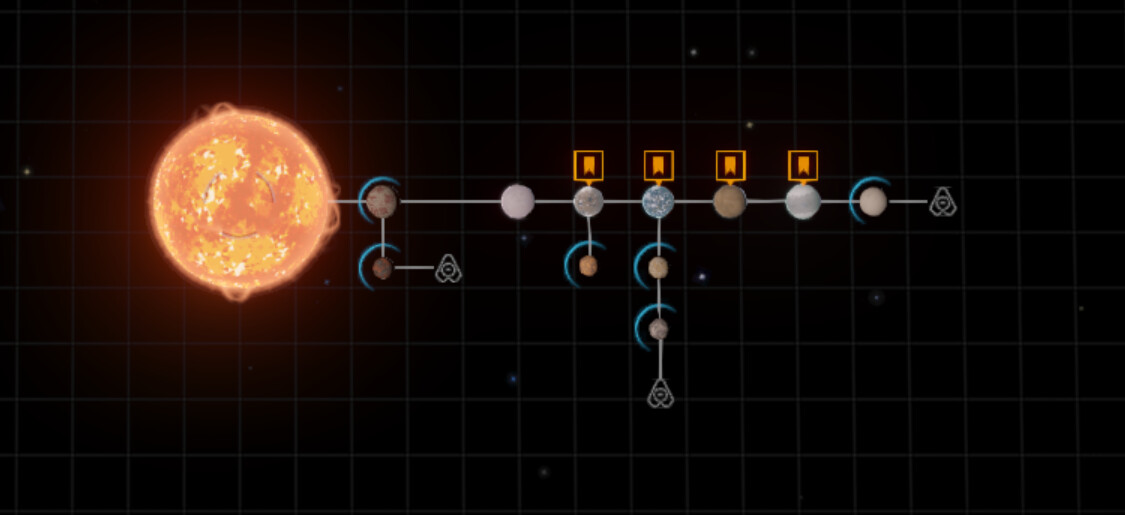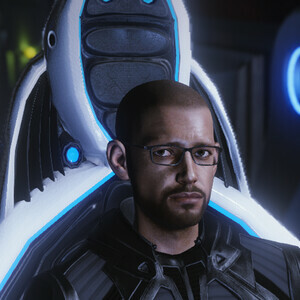LOCATIONS FROM THE HABITABLE EXOPLANETS CATALOG [PT. 3]
02 Nov 2020Felinesaffron32 [XBOX]
Moving to the next system... I reached Teegarden's Star, named after an astrophysicist from NASA. Here, the two nearest planets are of interest: Teegarden's Star b and Teegarden's Star c. Although in the HEC registry they are considered REXO, they are in fact icy bodies,with no chances of doing so. Despite that, I managed to land on Teegarden's Star b, to understand why this shall not be a REXO. As the type of this body suggests, not only the surface but also its entire composition are from ice with a few rocks an metals to compose the whole planet. Temperatures in this surface are around 23 K, which is about -250 degrees Celsius! Thanks to may ship and suit technologies, I managed to drive some minutes in this inhospitable place and take a picture.
As I was scanning the surface of Teegarden's Star c (second image), my sensors noticied that there is an unregistered comms beacon. This signal source emits hourly an encrypted message that provides coordinates to a location in the galaxy (maybe I could go there and investigate more closely).

One jump from Teegarden's Star, there is Kapteyn's star, another system named after another astronomer. In this system I was looking for Kapteyn's b, the nearest planet orbiting the star. This rocky ice world has smaller size and mass than Earth with temperatures around -195 degrees Celsius and half the gravity than on Earth. Its thick atmosphere is made by nitrogen with a rich content of argon. Althoug it has similar rotanional period, Kapteyn's b takes 562 days to complete its orbit around the star. An interesting characteristic is its high surface pressure: 656.61 atm! Live in this planet is equivalent to live below a column of 6600 Km of water!
Next jump was to Wolf 1061, a M-class star with no bodies orbiting around. I thing that this was a false-positive in the findings of HEC. Therefore, nothing to see here, though I toke the opportunity to fuel scooping little bit 'just in case...'
Jumping to another system: TRAPPIST-1. This is the more interesting place I have visited in a while. I mean interesting because in this system there is four of the REXO listed by HEC (third image): TRAPPIST-1 d, e, f and g. TRAPPIST-1 d is a high metal content world with approximately half size and mass of the Earth. Its surface is about 80 degrees Celsius and 4.3 atm. of pressure. With an atmosphere composed mainly by oxygen and nitrogen, this planet has a lower gratity than Earth: 0.69 G. Its orbital period is 4.0 days with a rotational period of 2.6 days. An interesting feature is that its rotation is tidally locked, which means that on side of the planet is always day and the other is always noght. TRAPPIST-1 d also has a landable moon with geysers expelling silicate vapor.
Now, TRAPPIST-1 e, a Earth-like world with two moons (both landable). This planet is not terraformable yet, but its atmosphere is already suitable for water-based life. With a temperature of 14.8 degrees Celsius, this planet has similar solid (with some volcanism) and atmospheric composition of the Earth.
TRAPPIST-1 f and g are the other two planets in the list. Both are high metal content worlds with size and mass compatible with Earth. However, TRAPPIST-1 f has very cold temperatures (-91 degrees Celsius) than TRAPPIST-1 g (9 degrees Celsius). TRAPPIST-1 g also has compatible gravity (1.06 G), while TRAPPIST-1 g has a lower gravity (0.62 G). Their atmosphere are also different: TRAPPIST-1 g has an thin atmosphere rich in oxygen, while TRAPPIST-1 g has a thick atmosphere with methane in its composition. The orbital and rotational period is of 9 days for TRAPPIST-1 f and 12 days for TRAPPIST-1 g, bein TRAPPIST-1 f also tidally locked.

These are great candidates for a new Earth, being TRAPPIST-1 e the most promising out of them. We already did not established any station here, but as I was passing by, I could see a few fleet Carriers in there. In the next page of this log (maybe the last one), I briefly describe exoplanets out of the bubble.
